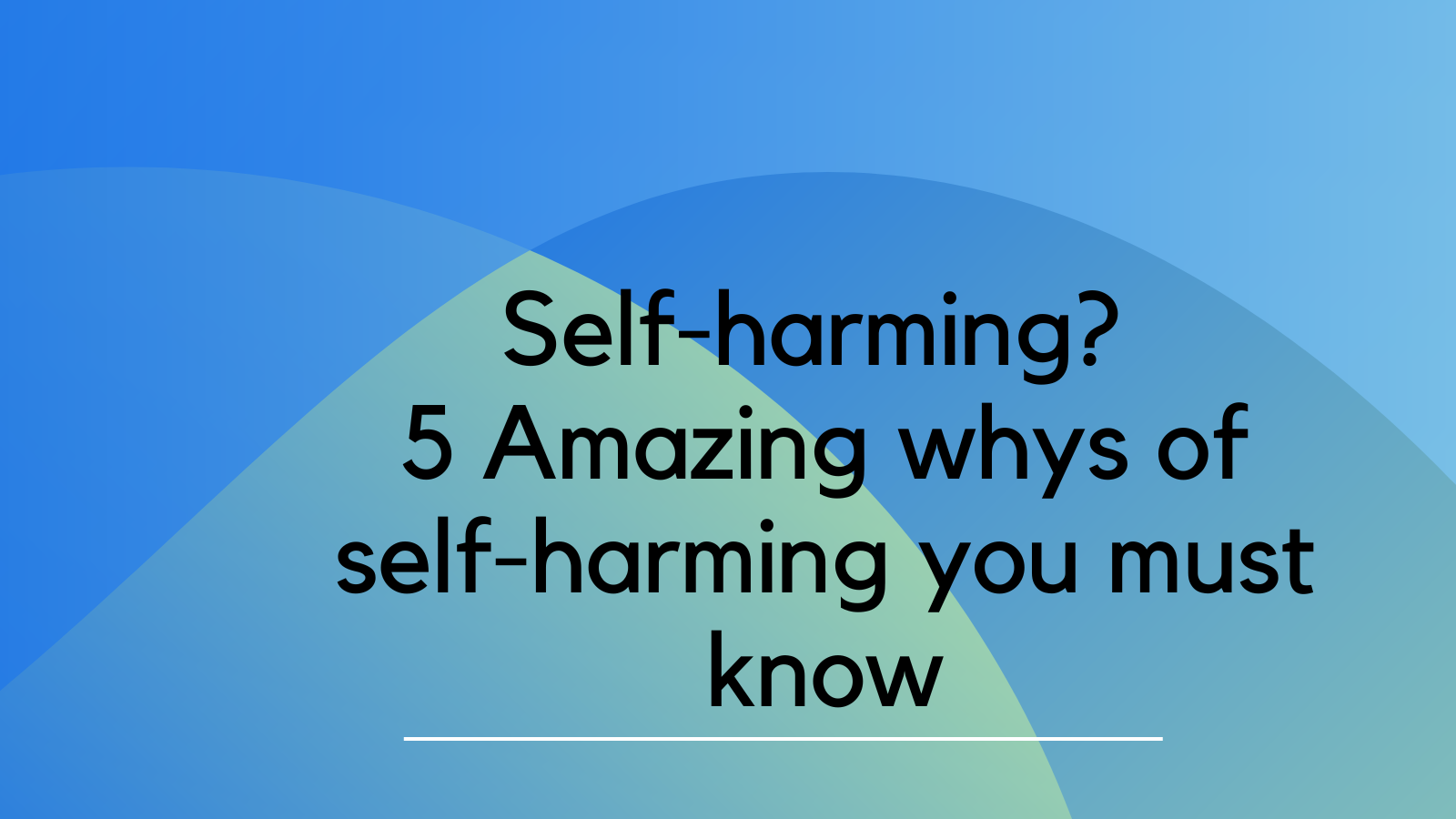Self-harming is a treatable psychological condition and people who engage in self-harming acts are not always suicidal. however, there are several reasons why people self-harm.
The things that stress one person may not stress or worry another. Some people can handle their problems by confiding in their loved ones, while others may need professional help. The strain can become overwhelming if you don’t release your feelings and discuss the things that are upsetting you. As a result, some people internalize these sensations and communicate them through their physical selves instead of their words. When this much pressure builds up, many people resort to self-harming.
If you self-harm, you may discover that negative emotions like anger, distress, worry, and depression increase your desire to inflict pain on yourself.
The motivations for self-harming vary widely between individuals. Among the many reported causes of and factors in self-injury among adolescents are:
- Social issues, such as
- being bullied,
- encountering obstacles at work or school,
- having trouble maintaining positive connections with others.
- navigating the journey of sexual or gender identity,
- alcohol and drug use;
- navigating social pressures on one’s own sense of self.
- adjusting to new circumstances, like a new school
- Traumatic causes such as
- Abuse, both physical and sexual
- losing a loved one;
- a miscarriage;
- a failed marriage;
- financial ruin,
- debt,
- and bankruptcy all qualify as traumatic experiences.
- Psychological cause includes:
- Dissociation (a loss of connection with one’s own identity and one’s environment),
- borderline personality disorder,
- post-traumatic stress disorder,
- bulimia,
- and anorexia is a psychological condition that can lead to self-harm.
- Emotional factors include
- worry,
- low self-esteem,
- loneliness,
- and sadness.
- Spiritual causes such as,
- a bewitched state,
- possession by a malevolent spirit
- Evil or destructive vibes.
These causes, especially when compounded, can be too much for any one person to handle. Many young people practice self-harming to “get out the hurt, anger, and pain” that they feel because of the stresses they face. They inflicted pain on themselves because they were at a loss and saw no other way out. When having trouble dealing with the emotional anguish, you’re feeling, talking to a trusted friend or family member or a medical expert can help.
The teen and young adult years are peak times you can experience the urge to self-harm, while it can happen at any age. People who have been victims of trauma, neglect, or abuse are the most vulnerable. It could have developed as a defense strategy, for instance, if the person grew up in an emotionally disturbed home. There is an increased risk of self-harming when someone engages in heavy alcohol consumption or drug use.
The desire to damage yourself may originate from intense emotions like rage, frustration, or pain. Self-harm can be a coping mechanism for those who are emotionally naïve or who learned as children to suppress their feelings. It’s possible that a boost in mood could result from an injury, as the body releases endorphins in response to pain. Alternatively, someone who is emotionally numb may deliberately hurt themselves in order to experience something “real” that will make the numbness go away.
Conclusion
Once someone has hurt themselves, they may feel bad about it. It’s possible that the person could damage themselves again if the shame causes them to feel really down. This pattern of conduct has the potential to create a self-perpetuating cycle of harm.
Attempts at suicide differ from acts of self-harm. This is a major sign of emotional distress, though, and requires treatment as such. People who self-injure are more likely to be suicidal than those who don’t. Dealing with the feelings at the root of the problem is crucial.

Leave a Reply